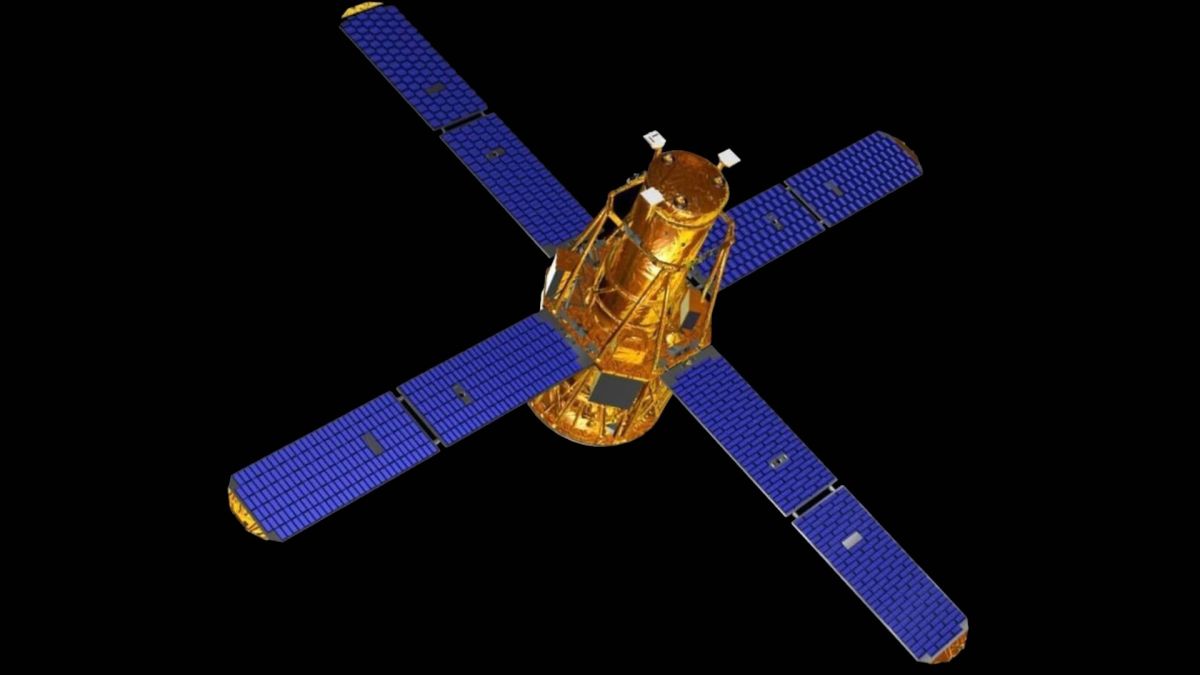A vast fleet of Starlink satellites orbits Earth, providing internet coverage on a global scale. On a clear night, you may be able to catch a glimpse of a few satellites in this megaconstellation as they crawl across the sky. And if you’re lucky enough to see them shortly after deploying, you might even see them appear as a “Starlink satellite train.” While the ever-growing satellite armada is a menace to astronomical observations, it can provide an interesting target for skywatchers if you know when and where to look. Appearing…
Read MoreMonth: April 2023
Space Station Science Highlights: Week of April 17, 2023
Crew members aboard the International Space Station conducted scientific investigations during the week of April 17 that included demonstrating a liquid-based carbon dioxide removal system, measuring eye changes during spaceflight, and offering students in Europe an opportunity to use computers on the space station for specific challenges.
Read MoreSpace Station Studies Help Monitor Climate Change
On Earth Day, people focus on the well-being of our planet, including how humans are affecting its climate.
Read MorePennsylvania Students to Hear from NASA Astronaut Aboard Space Station
Students from North Allegheny School District in McCandless, Pennsylvania, will have an opportunity this week to hear from a NASA astronaut aboard the International Space Station.
Read MoreWatch Cygnus cargo spacecraft leave the space station Friday morning
A private cargo ship laden with thousands of pounds of trash will leave the space station on Friday morning (April 21), and you can watch the action live. Northrop Grumman’s robotic Cygnus spacecraft, named S.S. Sally Ride after the first American woman and first known LGBTQ+ individual in space, is scheduled to depart the International Space Station (ISS) Friday at 7:20 a.m. EDT (1120 GMT). You can watch live here at Space.com, courtesy of NASA Television (opens in new tab), starting at 7 a.m. (1100 GMT). Cygnus will haul away more…
Read MoreDead NASA satellite crashes to Earth over the Sahara Desert
A dead NASA spacecraft crashed to Earth Wednesday night (April 19) over northern Africa, according to the U.S. military. NASA’s RHESSI satellite reentered Earth’s atmosphere at 8:21 p.m. EDT on Wednesday (0021 GMT on April 20), according to the space agency. “The Department of Defense confirmed that the 660-pound spacecraft re-entered the atmosphere over the Sahara Desert region, at approximately 26 degrees longitude and 21.3 degrees latitude,” NASA officials wrote in an update today (opens in new tab) (April 20). Those coordinates place the fall near the Sudan-Egypt border, astrophysicist…
Read MoreWatching SpaceX’s Starship launch as the world’s largest rocket felt simply unreal (video)
SOUTH PADRE ISLAND, Texas — First, there was the fire. Then came the sound. A mighty, mighty sound. When SpaceX’s Starship spacecraft launched into the sky atop its massive Super Heavy booster today (April 20), the spectacle was unmistakable. At ignition, dozens of Raptor engines belched brilliant, hot flame from their methane-fueled maws as cheers erupted from the throngs of spectators lining the beach here. But Starship was quickly engulfed by its own exhaust and the crowd began to wonder: Did it abort? Is it still there? You know, all…
Read MoreNASA Teams Persevere Through Plant Challenges in Space
Dr. Gioia Massa, life sciences project scientist at NASA’s Kennedy Space Center in Florida, talks about persevering through a challenging plant experiment in space.
Read MoreSuperBIT Sees Colliding Antennae Galaxies
This view of the Antennae Galaxies, two large galaxies colliding 60 million light-years away, is one of the first research images from the Super Pressure Balloon Imaging Telescope (SuperBIT) that launched on a scientific super pressure balloon April 16, 2023 (local time New Zealand).
Read MoreNASA’s New 3D-Printed Superalloy Can Take the Heat
NASA has demonstrated a breakthrough in 3D printable high-temperature materials that could lead to stronger, more durable parts for airplanes and spacecraft.
Read More